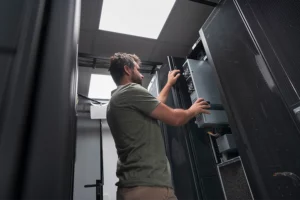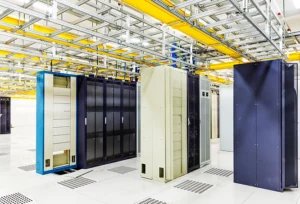We are in an era where data center growth demands are at an all-time high. Research firm Gartner Inc. projects that worldwide information technology spending will climb 5.1% year-over-year in 2023 to $4.6 trillion. “The rise in IT spending expected next year will be driven by increased investments across several areas, including software, data center systems, and professional services.”
This only means equipment cycles are shortening due to upgrades, improvements, and general growth happening within organizations. Which lends to tremendous pressures on data center and IT teams to move old tech assets out and, in turn, find capital to fund these required future projects and investments.
Selling your aging assets can solve both challenges, and when done correctly, it doesn’t have to be a huge added task that further takes away from your resources. And believe it or not, even though you’re on the hunt for the newest, latest models, there are many businesses who would be happy to take old equipment off your hands to support their company’s needs especially when it means saving money on their end too.
Why should you opt to sell your datacenter equipment?
Lots of changes happen quickly within IT to support the functions of an organization and its people. Your data center is a critical, ever-evolving part of your company’s operations. It’s a constant cycle and as a result outdated or surplus equipment can begin to take up valuable space and can become an added cost with ongoing maintenance and security. These end-of-life IT assets can still have a dollar value; however, the longer it sits, the more their value decreases.

Plus, repurposing is always beneficial for the environment. Extending the life of IT assets reduces the need to manufacture new ones, minimizing the use of natural resources and reducing the emission of greenhouse gases.
Selling your old legacy equipment can also give your business the opportunity to:
- Retain valuable building workspace
- Avoid storage and warehouse fees
- Fund new data center projects
Best practices for data center managers and their teams when selling your equipment.
- Account for everything you want to sell. Most of your hardware is already following a refresh/renew/upgrade cycle, so when it’s time to sell, you can likely do it all at once and in bulk, making the process efficient. Generally speaking, equipment that holds the highest monetary worth are servers, networking hardware, desktops, laptops, CPUs & memory. The value you will get back depends on the age, model type, market and condition of the hardware.
- Identify hardware or equipment that may be more valuable based on its individual parts rather than the whole unit. In many instances, components, like expensive CPUs carry a more significant profit.
- Start with a spreadsheet listing all servers and corporate IT equipment to sell. Below we’ve listed some important factors that determine the value of what you are selling – it’s best to be detailed as possible – this extra step will get you the best return for your equipment.
- Product Make and Model
- Model or Serial
- Brand
- Age
- Overall Condition
- Packaging (if you have original packaging)
- Quantities
Note: If you are selling equipment on your own, we recommend you go the extra step and take pictures of your equipment along with product numbers. Photos give your buyer a clear visual of the condition of your used IT equipment.
- When selling old assets that carry value, many data center teams turn to a qualified ITAD company. There are several reasons why they go this route and something to consider since data living on aging assets can compromise the security of an entire organization and its customers. This can be costly for a business’ bottom line and reputation.

What to look for in an ITAD vendor when selling your end-of-life assets.
An ITAD vendor will already have secure processes in place, making it easy for you to hand over your list for them to do the leg work. They can arrive on-site to handle all the resource-consuming details including logistics, data security and reporting.
Since they are accustomed to this part of the business since they likely do it all the time they will ensure that assets are securely transported with shipping updates, hardware inventory, and data sanitization. You should require all the appropriate documentation for your records.

Access to longstanding relationships with domestic and overseas buyers is a huge initiative to get the most value out of your retired assets.
By working with a reputable dealer, you can be confident that your equipment will be appropriately disposed of or repurposed. Verify their procedures are certified to protect your company, ensuring zero data leakage. Certifications to look for – Certificates of Insurance, compliance, sanitizations standards, certifications in NAID R2, ISO 9001 and e-stewards.
We’ve discussed the areas to consider when selling your end-of-life equipment. Technology moves fast, so having a “sell” plan in place for your company will mean you can benefit from the residual value of aging assets and fund your department’s objectives for the coming year.
Data Slayer’s Buyback program makes it easy to sell your equipment. This case study illustrates how one of our clients got the most value out of their aging IT assets through our program.
If you need guidance or already have a list of old equipment you are ready to sell, contact us or fill out our quick quote form. We will provide a competitive bid within 24 hours.
Share